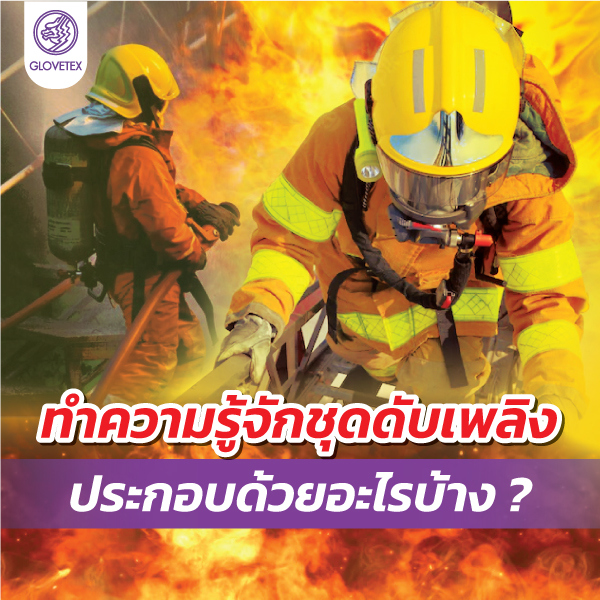Getting to Know Firefighting Gear

When it comes to dangerous professions, firefighters are among the top in terms of risk. Firefighters require not only dedication and courage but also specialized equipment to ensure their safety while on duty. Unlike movie heroes who are depicted as invulnerable and can withstand any danger without protective gear, real-life firefighters face genuine hazards. Thus, firefighting gear is crucial for their safety and effectiveness.
1. Fire Helmet:
A protective headgear used during firefighting operations. It should meet at least the standard MOC 368 (Safety Hat Type D) and feature bright colors or reflective strips on dark-colored helmets. The helmet must be strong, impact-resistant, and equipped with a face shield to protect against heat and hazards to the face. Most helmets are made from fiberglass, which makes them lightweight.
2. Head Cover (Hood):
A hood designed to cover the head, protecting against heat from flames. Made from fire-resistant fabric, it should be flame-retardant, non-combustible, and wick away sweat effectively while allowing for good ventilation.
3. Firefighting Jacket:
Used to cover the uniform or outer clothing, typically worn outside buildings. It protects against heat radiation from flames and hot water droplets. The jacket should be highly visible or have reflective strips on the arms and torso. The fabric may be canvas or a similar heat-resistant material, lined with an additional layer of fabric, and should reach down to the knee.
4. Firefighting Suit (For Interior Use):
The suit, consisting of a jacket and pants, is crucial for protecting 80% of the body from flames. It comprises at least three layers of woven and synthetic fabrics. The material must withstand temperatures up to 500°C without melting, igniting, or deforming. The suit should meet EN 469 or NFPA standards and have reflective strips with a minimum of 3 m visibility, including bright yellow with fire-resistant grey reflective strips on the front, back, sleeves, elbows, and legs.
5. Firefighting Gloves:
Usually made from thick or thin woolen fabric, these gloves are designed to be worn on all five fingers. They should be heat-resistant, flame-retardant, and able to withstand hot water, chemicals, and cuts, as firefighters handle equipment and materials that may be hot or sharp.
6. Firefighting Boots:
Available in genuine leather or other durable materials, these boots are worn during firefighting operations. They feature steel plates in the soles and steel toe caps according to MOC 523 standards for industrial safety footwear. The boots should include heat-resistant and waterproof layers to protect against sharp objects and extreme temperatures encountered at the scene.
To summarize about firefighters: their primary role is to use hoses to extinguish fires and rescue all forms of life, from people to pets. Therefore, their gear must be specially designed.
Firefighting suits are made from materials that are resistant to heat and flames. These materials self-extinguish when exposed to fire, preventing the flames from spreading. The suits are resistant to tearing and are treated with fire-resistant chemicals.
These suits can withstand temperatures of several thousand degrees Celsius, which contributes to their high cost, ranging from tens of thousands to hundreds of thousands of dollars. They have a limited lifespan and require regular maintenance. Due to the fire-resistant chemicals used in their fabrication, they cannot be washed normally and must be cleaned by specialized fire suit laundering services.
Given the high risks involved in firefighting, it is crucial to use gear that meets international standards and has been tested by reputable institutions to ensure it effectively protects the lives of firefighters.
